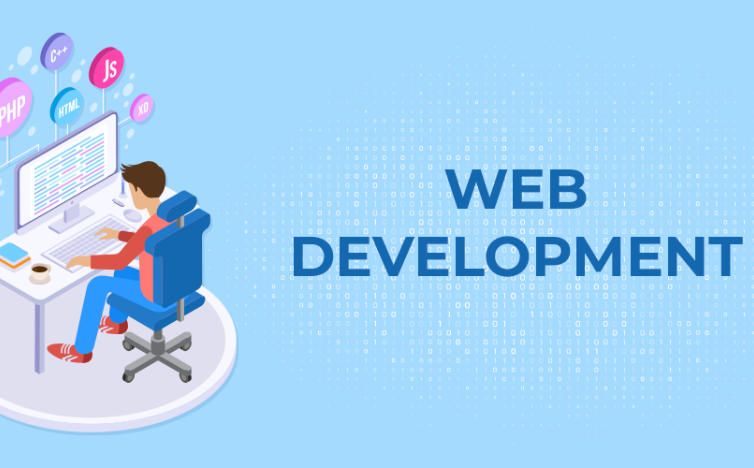The world of website development is constantly evolving, with programming languages and frameworks advancing rapidly to accommodate the growing demands of the digital age. Selecting the right language for a project can streamline development, improve performance, and ensure scalability. Here are some of the top programming languages for web development in 2024.
Top Programming Languages for Website Building

1. JavaScript: The Core Language of Web Development
JavaScript continues to be the foundation of web development in 2024, supporting both front-end and back-end frameworks. With the popularity of libraries and frameworks like React, Angular, and Vue.js, JavaScript offers robust functionality, making websites more dynamic and interactive.
JavaScript’s versatility extends to the server side with Node.js, allowing developers to use a single language across the entire stack. The large community and vast resources make JavaScript an indispensable language in web development.
2. Python: Easy-to-Learn and Highly Versatile
Python’s readability and simplicity have made it a top choice for developers, particularly for data-driven and AI-powered web applications. Frameworks like Django and Flask simplify back-end development, providing secure and scalable solutions.
The language’s versatility in handling both web and data processing tasks makes Python an ideal choice for projects that integrate machine learning or artificial intelligence features, making it increasingly popular among developers.
3. PHP: Reliable for Content-Driven Websites
PHP remains a reliable choice for back-end web development, especially for content management systems (CMS) like WordPress, Joomla, and Drupal. Known for its flexibility, PHP is well-suited to manage dynamic content, databases, and user interactions.
With regular updates and a strong ecosystem, PHP remains relevant in 2024, particularly for websites focused on content management and e-commerce.
4. TypeScript: Enhanced JavaScript for Large Projects
TypeScript, a superset of JavaScript, has gained traction for large-scale applications that require type safety and error checking during development. Used widely with Angular and increasingly with React and Vue, TypeScript makes code more maintainable and reduces bugs in production.
TypeScript is ideal for complex projects where teams need to ensure code reliability, making it a solid choice for enterprise-level web applications.
See Also: Building a Mobile-Friendly Website That Ranks Well on Google
5. Ruby: An Efficient Option for Rapid Prototyping
Ruby, with its popular framework Ruby on Rails, is known for rapid prototyping and clean, readable code. Ruby on Rails provides a well-structured framework, allowing developers to build robust web applications quickly and efficiently.
Though not as widely used as JavaScript or Python, Ruby is still a preferred choice for startups or businesses looking for a fast turnaround in development, especially in e-commerce or social media applications.
6. Go (Golang): High Performance for Scalable Web Services
Go, or Golang, has gained popularity for its performance and simplicity in developing server-side applications. Known for handling concurrent operations efficiently, Go is ideal for web services that require high performance, scalability, and reliability.
Developed by Google, Go is a strong contender for back-end development, especially for microservices architecture and applications that prioritize speed and minimal resource consumption.
7. Java: A Long-Standing Option for Large Enterprise Applications
Java remains one of the most reliable languages for enterprise-level applications. The Spring framework, for example, is widely used for secure and scalable back-end development. With powerful features for scalability and security, Java is often the go-to choice for financial institutions, healthcare, and e-commerce websites.
Though more complex than some modern languages, Java’s stability and performance continue to make it a dependable choice in 2024.
8. Kotlin: A Modern Choice for Mobile and Web Compatibility
Originally designed for Android development, Kotlin has been expanding its presence in web development due to its interoperability with Java and ease of use. Known for reducing boilerplate code, Kotlin can work well for both web and mobile applications when used with frameworks like Ktor.
Kotlin’s streamlined syntax and compatibility with existing Java codebases make it an appealing choice for cross-platform projects that include both mobile and web components.
9. Swift: Essential for Apple Ecosystem Integration
Swift, primarily used for iOS applications, is beginning to see applications in web development, especially for websites that need seamless integration with iOS devices. Swift’s ease of use and growing libraries allow developers to create interactive, efficient web applications.
For businesses with a strong Apple user base, Swift is an excellent language for creating a cohesive experience across both mobile and web platforms.
10. Rust: Ideal for High-Performance and Secure Web Applications
Rust’s emphasis on performance and security has made it a strong choice for web development where memory safety is critical. While still emerging, Rust’s web development frameworks, like Rocket and Actix, offer fast and secure options for back-end services.
Rust’s appeal lies in its capability to handle complex web applications that prioritize performance and security, especially for companies developing critical infrastructure or high-traffic websites.
Call us: Contact us for Website Development Services: +971 58 830 3415
Choosing the Right Language for Your Project
Selecting the best language for a website project involves considering factors like project scope, performance needs, and team expertise. While each language offers unique benefits, understanding the specific requirements of your project will guide you toward the most effective choice for development in 2024. Whether you’re building a dynamic front end, a robust back end, or a data-driven application, these languages provide powerful tools to bring your vision to life.
